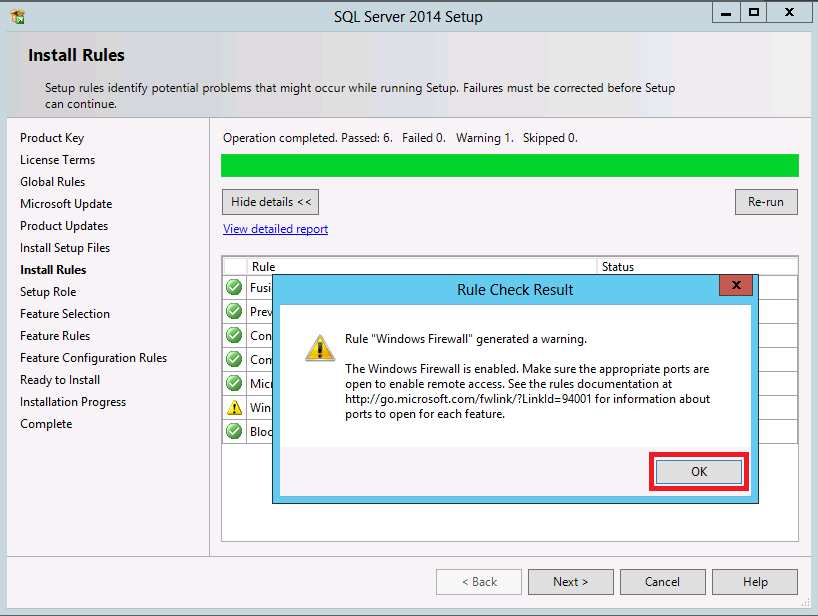

- #How to install sql server 2014 on domain controller how to
- #How to install sql server 2014 on domain controller update
- #How to install sql server 2014 on domain controller password
Log onto both nodes and initialize the volumes you will be using for storing your databases and transaction logs. If there are no updates to install go ahead and reboot to commit the domain join change. Reboot once all updates have been installed.
#How to install sql server 2014 on domain controller update
Go ahead and run Windows Update at this time if you want. Once we're done with the SQL installation we will re-run Windows Update to ensure we capture any additional SQL updates that may need to be installed. Windows UpdateĪs a best practice - and especially with cloud server instances - I always like to run Windows Update before starting anything major. Let's not reboot at the moment, but continue onto Windows Update which might require a reboot depending on the type of updates that are outstanding. Once finished you should get a response from PowerShell that indicates the changes won't take affect until you reboot.
#How to install sql server 2014 on domain controller password
Use the username and password for the domain administrator. You would run: Add-Computer -DomainName YOURDOMAIN This can be done by using the following PowerShell command: Any public lookups would happen via referrals on the AD DNS servers. Clear the DNS server settings for the public interface to ensure you can resolve the AD domain without issue.Configure the private interfaces on both SQL nodes to use the Domain Controllers as the DNS servers.The remaining steps that you will need to do before moving forward with installing SQL and configuring the cluster are:
#How to install sql server 2014 on domain controller how to
You did most of the network setup in the tutorial on how to create the environment within the DCD. Clients connect to an availability group listener which determines the correct replica to send the request. Connections to the cluster are managed by WSFC. One node in a cluster will act as a primary replica with support for one to eight secondary replicas. What this means is that in the event of a failure all databases associated with a given availability group will failover to a secondary replica. These databases are known as your availability databases. The concept is very similar to Exchange's DAG technology in that an Availability Group encompasses and supports failover of a discrete set of databases. An AlwaysOn Availability Group cluster uses and requires Windows Server Failover Clustering (WSFC). One of the more exciting additions to SQL in the past few versions has been the introduction of AlwaysOn Availability Groups. We plan on covering how to setup a cluster using AlwaysOn Failover Cluster Instances, which is available for Enterprise, Business Intelligence, and Standard editions, in a later tutorial. This page breaks down the features in SQL and the edition in which they are available.įor the features we're using in this tutorial you will need to use Enterprise Edition. Microsoft provides a great overview of the differences between SQL editions here. We will be using AlwasyOn Availability Groups with non-shared storage. By the end of this tutorial you will have a SQL cluster deployed in your datacenter. We will be leveraging the Active Directory domain you created in the first tutorial and the DCD cluster you brought online in the second. Setting Up Windows 2012 R2 Active Directory Using the DCDĬreate a Windows 2012 R2 Failover Cluster on ProfitBricks

Before jumping into this tutorial you will want to have first completed the following pre-requisite tutorials:


 0 kommentar(er)
0 kommentar(er)
